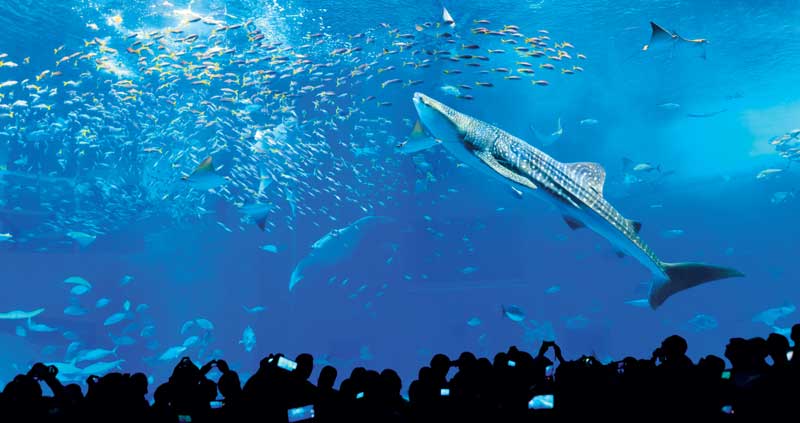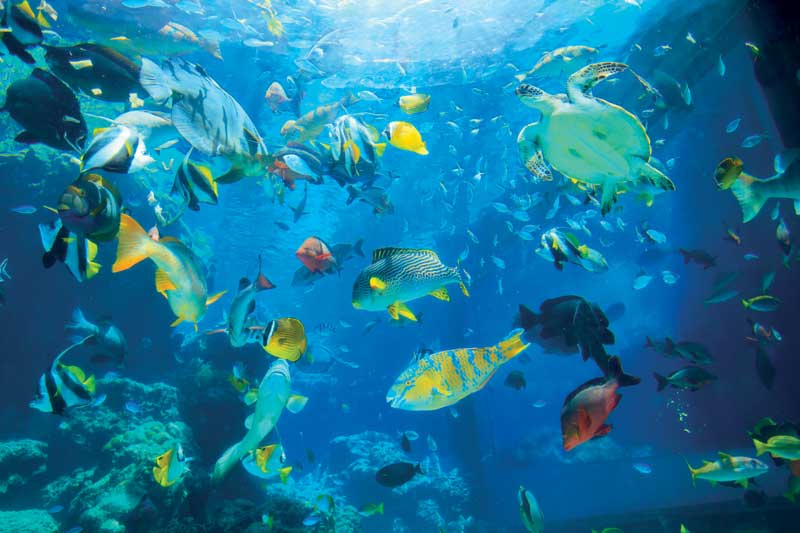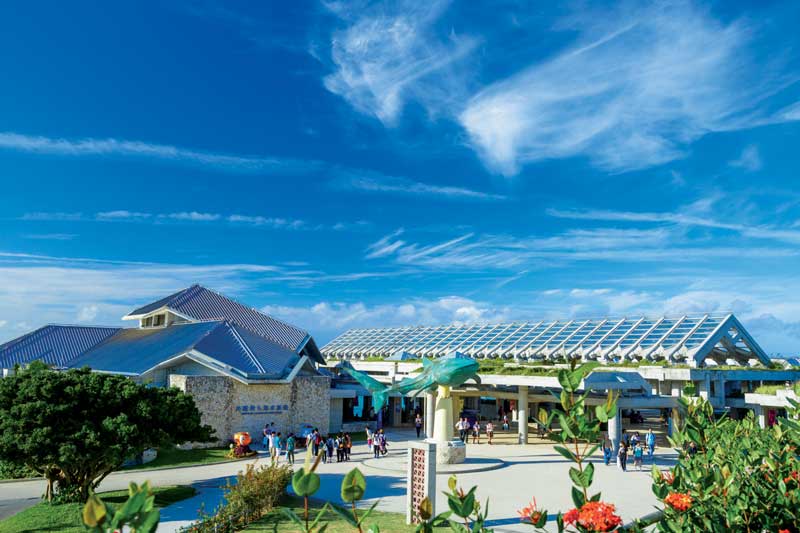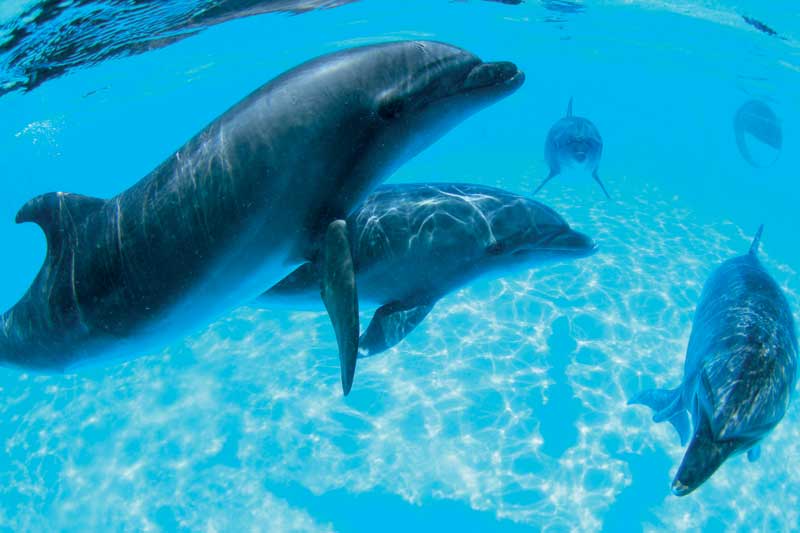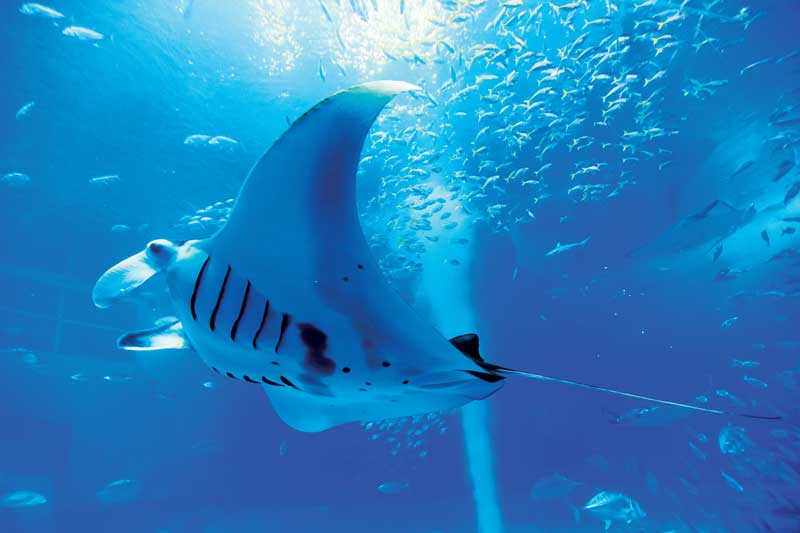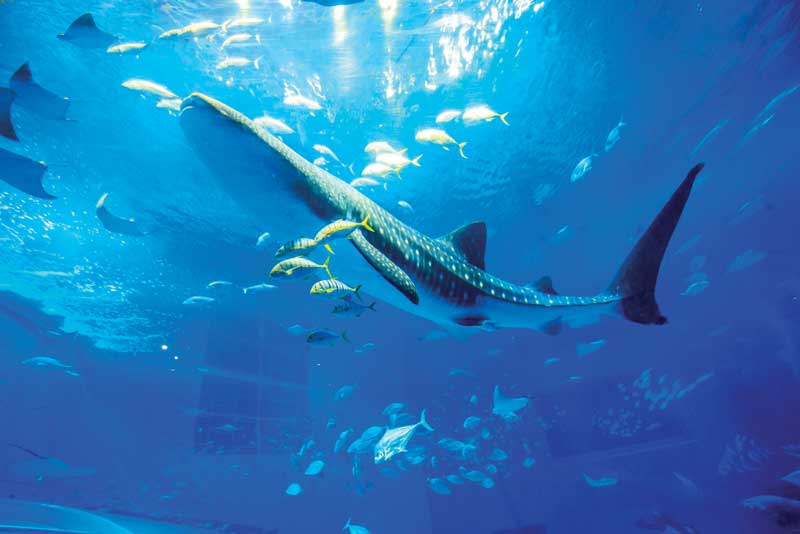A True Marine Haven
There is an undeniable beauty to the islands of Okinawa, and a big part of this beauty has to do with its natural and marine diversity. There is a place in the main island of the Okinawa Prefecture that devotes itself to the care and preservation of countless species, including one of the largest species of manta rays in the world, the whale shark, the sea turtle and the manatee: such place is the Okinawa Churaumi Aquarium.
The aquarium is located inside the Ocean Expo Park, north of the capital city of Naha. Aside from the aquarium, the park features many other attractions that will surely captivate visitors with an experience they will never forget. Some of them are the Dolphin Lagoon, the Manatee Pool and the Sea Turtle Pool, to admire these species up close and learn about them, all free of charge. Additionally, the park is home to the Okichan Theater, the Native Okinawa Village (a re-creation of a traditional community from the Ryukyu Kingdom between the 17th and 19th centuries), the Tropical Dream Center (featuring over 2,000 orchids, wetland and aquatic plants, tropical fish and butterflies), Kids’ Adventure Land and Emerald Beach, where you can bask in the crystalline waters on a sunny afternoon from April to October. For a meal or drink, you can stop by the Inoh Restaurant or the Ocean Blue Café.
“Our aim is to let visitors experience the magnificence and the importance of the Okinawa Sea by encountering the marine life inhabiting there.”
The Okinawa Churaumi Aquarium is a world-class aquarium designed to create an immersive experience for visitors. Open since November 1st, 2002, the aquarium’s concept revolves around the idea of recreating natural habitats for the Okinawan sea life. It’s the first aquarium to keep whale sharks with a program of captive breeding. The aquarium also boasts the world’s first large coral reef exhibit, providing the ideal conditions for coral to reproduce and sustain marine life.
Churaumi means “beautiful ocean” in Okinawan dialect, and there isn’t a more accurate description for these facilities. An average of three million people visit the aquarium each year, and each visitor can expect to discover something new. You can learn about approximately 70 species in the Coral Sea exhibit, an open tank based on the coral that live in the waters of Motobu Town. The aquarium uses water directly taken from the beautiful clean sea of Okinawa, 300m off the coast of Ocean Expo Park—a privilege most aquariums don’t have. You will also be able to (gently!) touch and see species like the starfish and the sea cucumbers up close in the Life in the ‘inoh’ touch pool.
Shark enthusiasts can’t miss the Shark Research Lab to learn about shark habitat and behavior. The Kuroshio Sea tank is 10m deep and 35m wide, with a capacity of 7,500m3; here you will discover the two resident whale sharks, the largest of which measures 8.7 meters in total length, along with species like the skipjack tuna, manta rays and much more (around other 70 species). The Aqua Room creates an atmosphere of underwater wonder, where visitors can look up at the sea life through a ceiling made of acrylic, as though sitting on the ocean floor.
These and many other adventures you will find upon walking into this aquatic wonderland through the Uminchu Gate, where a whale shark sculpture will welcome you into the facilities. Opening hours from March to September are from 8:30 to 20:00 (last admission at 19:00), and during the October-February period from 8:30 to 18:30 (last admission at 17:30). One of the program’s highlights is feeding time, which takes place at 9:30, 15:00 and 17:00 in the Kuroshio Sea. If there is a place in Okinawa you can’t miss on your trip to these paradisiac islands, is the Okinawa Churaumi Aquarium, a true marine haven.
Okinawa Churaumi Aquarium
424 Ishikawa, Motobu-cho,
Kunigami-Gun. Okinawa
Tel: 0980-48-3748
Text: Okinawa Commemorative National Government Park (Ocean Expo Park) / Okinawa Churaumi Aquarium ± Photo: Okinawa Churaumi Aquarium


